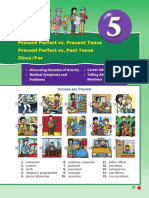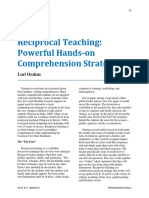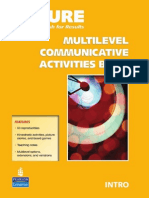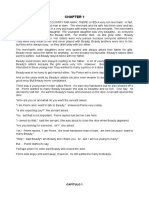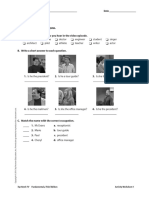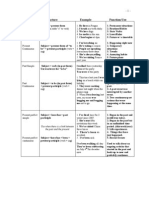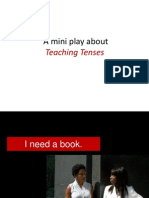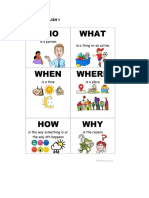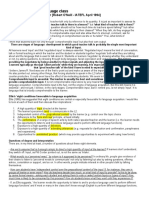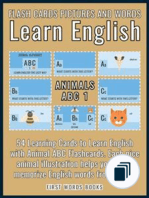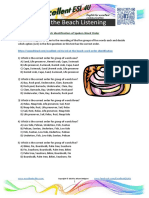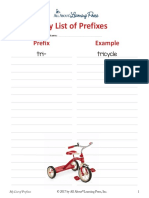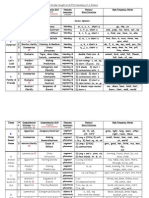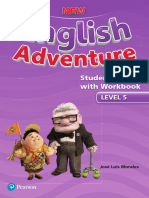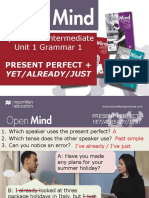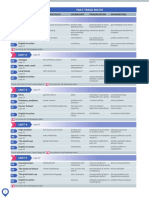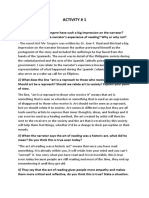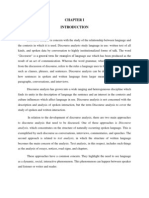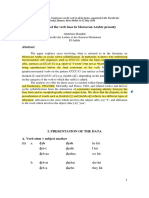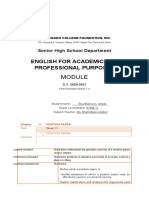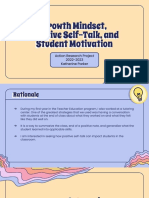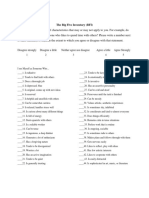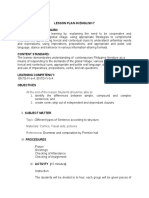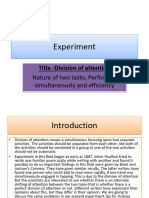100%(1)100% found this document useful (1 vote)
62 viewsSidebySide3TG Unit01
SidebySide3TG Unit01
Uploaded by
Tito Giron CruzGRAMMAR I we do you they eat? he does she it I We don't. You No, they he she doesn't. They I am. He she is. Yes, it we you are. They I'm. He he is. He isn't. No, it we we you aren't.
Copyright:
© All Rights Reserved
Available Formats
Download as PDF, TXT or read online from Scribd
SidebySide3TG Unit01
SidebySide3TG Unit01
Uploaded by
Tito Giron Cruz100%(1)100% found this document useful (1 vote)
62 views32 pagesGRAMMAR I we do you they eat? he does she it I We don't. You No, they he she doesn't. They I am. He she is. Yes, it we you are. They I'm. He he is. He isn't. No, it we we you aren't.
Original Title
SidebySide3TG_Unit01
Copyright
© © All Rights Reserved
Available Formats
PDF, TXT or read online from Scribd
Share this document
Did you find this document useful?
Is this content inappropriate?
GRAMMAR I we do you they eat? he does she it I We don't. You No, they he she doesn't. They I am. He she is. Yes, it we you are. They I'm. He he is. He isn't. No, it we we you aren't.
Copyright:
© All Rights Reserved
Available Formats
Download as PDF, TXT or read online from Scribd
Download as pdf or txt
100%(1)100% found this document useful (1 vote)
62 views32 pagesSidebySide3TG Unit01
SidebySide3TG Unit01
Uploaded by
Tito Giron CruzGRAMMAR I we do you they eat? he does she it I We don't. You No, they he she doesn't. They I am. He she is. Yes, it we you are. They I'm. He he is. He isn't. No, it we we you aren't.
Copyright:
© All Rights Reserved
Available Formats
Download as PDF, TXT or read online from Scribd
Download as pdf or txt
You are on page 1of 32
2 CHAPTER 1
CHAPTER 1 OVERVIEW: Text Pages 110
FUNCTIONS
ASKING FOR AND REPORTING
INFORMATION
Are you busy?
Yes, I am. Im studying.
What are you studying?
Im studying English.
Who are you calling?
What are you doing?
Im practicing the piano.
What are George and Herman
talking about?
What are you complaining
about?
Whats your teachers name?
What are their names?
What do you do?
When do you go to class?
Where are you from?
Where do you live now?
Where do you work?
How often do you watch TV?
Do you practice very often?
Yes, I do.
Is she a good tennis player?
Yes, she is.
Are you married?
Are you single?
Her tennis coach says shes
excellent.
Her friends tell her she plays
tennis better than anyone
else.
INQUIRING ABOUT LIKES/DISLIKES
Do you like to ski?
What do you like to do in your
free time?
EXPRESSING INABILITY
Im not a very good skier.
GRAMMAR
I
we
Do
you
they eat?
he
Does she
it
I
We
eat.
You
They
He
She eats.
It
PRESENT CONTINUOUS TENSE
(I am) Im
(He is) Hes
(She is) Shes
(It is) Its eating.
(We are) Were
(You are) Youre
(They are) Theyre
SIMPLE PRESENT TENSE
Subject Pronouns
I
he
she
it
we
you
they
I
we
dont.
you
No, they
he
she doesnt.
it
I
we
do.
you
Yes, they
he
she does.
it
Am I
he
Is she
it eating?
we
Are you
they
Possessive Adjectives
my
his
her
its
our
your
their
Object Pronouns
me
him
her
it
us
you
them
Im not.
he
she isnt.
No, it
we
you arent.
they
I am.
he
she is.
Yes, it
we
you are.
they
TO BE: SHORT ANSWERS
002-033_SBSTG3_CH01.qxp 7/10/07 2:13 PM Page 2
CHAPTER 1 3
NEW VOCABULARY
Occupations and Agent
Nouns
ballet dancer
ballet instructor
coach
cook
instructor
music teacher
skater
soccer coach
swimmer
tennis coach
typist
violinist
Verbs
compose
stay after
Miscellaneous
army
Beethoven
bill
interests (n)
Little Red Riding Hood
Madagascar
Orlando
professional
Scrabble
talk show
telephone bill
whenever
once a day
twice a day
three times a day
002-033_SBSTG3_CH01.qxp 7/10/07 2:13 PM Page 3
4 CHAPTER 1
Text Page 1: Chapter Opening Page
VOCABULARY PREVIEW
You may want to introduce these words before beginning the chapter, or you may choose
to wait until they first occur in a specific lesson. If you choose to introduce them at this
point, here are some suggestions:
1. Have students look at the illustrations on text page 1 and identify the words they
already know.
2. Present the vocabulary. Say each word and have the class repeat it chorally and
individually. Check students understanding and pronunciation of the words.
3. Practice the vocabulary as a class, in pairs, or in small groups. Have students
cover the word list and look at the pictures. Practice the words in the following
ways:
Say a word and have students tell the number of the illustration.
Give the number of an illustration and have students say the word.
002-033_SBSTG3_CH01.qxp 7/10/07 2:13 PM Page 4
CHAPTER 1 5
Text Page 2: Theyre Busy
RULE: The present continuous tense is used to express events
that are happening right now.
EXAMPLES: Whats she doing?
Shes reading.
Whats she reading?
Shes reading the newspaper.
CLOSE UP
Review: Present Continuous Tense
FOCUS
1. Review Yes/No questions and affirmative
short answers. Form sentences with the
words in the left and center boxes at the top
of text page 2. Have students repeat
chorally. For example:
Am I eating? Is he eating?
Yes, I am. Yes, he is.
2. Use Side by Side Picture Cards or your own
visuals to practice short answers.
a. Point to each visual and ask:
Is ing?
Have students respond with the
affirmative short answer. For example:
A. Is she eating?
B. Yes, she is.
A. Are they studying?
B. Yes, they are.
b. Point to each visual and call on pairs of
students to ask and answer as above.
3. Review the present continuous tense.
a. Form sentences with the words in the
right-hand box at the top of the page.
Have students repeat chorally. For
example:
Im eating.
Hes eating.
Check students pronunciation of the final
s sound in Hes, Shes, Its.
b. Use your own visuals or Side by Side
Picture Cards for verbs.
Ask students: What doing? and
have students answer individually, then
chorally. For example:
A. Whats he doing?
B. Hes cooking.
A. Whats she doing?
B. Shes reading.
A. What are they doing?
B. Theyre studying.
c. Have students role-play people in the
visuals. Ask students: What are you
doing? For example:
A. What are you doing?
B. Im cooking.
A. What are you and (Jim) doing?
B. Were cooking.
1. Have students look at the model illustration.
2. Set the scene: A daughter is talking to her
father.
INTRODUCING THE MODEL
GETTING READY
002-033_SBSTG3_CH01.qxp 8/9/07 8:59 PM Page 5
6 CHAPTER 1
New Vocabulary
9. compose
3. With books closed, have students listen as
you present the model or play the audio one
or more times.
4. Full-Class Repetition: Model each line and
have students repeat.
Pronunciation Note
The pronunciation focus of Chapter 1 is
Reduced are (text page 10). You may
wish to model this pronunciation at this
point (What are you studying?) and
encourage students to incorporate it into
their language practice.
5. Have students open their books and look at
the dialog. Ask students if they have any
questions. Check understanding of vocabulary.
6. Group Choral Repetition: Divide the class
in half. Model line A and have Group 1
repeat. Model line B and have Group 2
repeat, and so on.
7. Choral Conversation: Groups 1 and 2
practice the dialog twice, without teacher
model. First, Group 1 is Speaker A and
Group 2 is Speaker B. Then reverse.
8. Call on one or two pairs of students to
present the dialog.
(For additional practice, do Choral
Conversation in small groups or by rows.)
Examples
1. A. Is Alan busy?
B. Yes, he is. Hes baking.
A. Whats he baking?
B. Hes baking cookies.
2. A. Is Doris busy?
B. Yes, she is. Shes reading.
A. Whats she reading?
B. Shes reading the newspaper.
1. Exercise 1: Call on two students to present
the dialog. Then do Choral Repetition and
Choral Conversation practice.
2. Exercise 2: Same as above.
3. Exercises 39:
Culture Note
Exercise 9: Ludwig von Beethoven
(17701827) was a German composer of
classical music.
Either
Full-Class Practice: Introduce the new
vocabulary before doing Exercise 9. Call on a
pair of students to do each exercise.
(For more practice, call on other pairs of
students, or do Choral Repetition or Choral
Conversation.)
or
Pair Practice: Introduce all the new
vocabulary. Next have students practice all
the exercises in pairs. Then have pairs
present the exercises to the class.
(For more practice, do Choral Repetition or
Choral Conversation.)
Pages 23
WORKBOOK
SIDE BY SIDE EXERCISES
002-033_SBSTG3_CH01.qxp 7/10/07 2:13 PM Page 6
CHAPTER 1 7
1. What Are They Doing?
Use Side by Side Picture Cards for verbs and
community locations or your own visuals to
review the present continuous tense.
Hold up each visual and call on students to ask
and answer as many questions as possible about
what the person or people in the visual are doing.
For example:
A. Whats she doing?
B. Shes cleaning her apartment.
A. Whats he doing?
B. Hes playing the piano.
A. What are the other people doing?
B. Theyre listening to the concert/music.
2. Dictation
Dictate the following sentences to your
students. Read each sentence twice.
1. Shes painting the kitchen.
2. Whats he doing?
3. Hes baking cookies.
4. Theyre studying.
5. Were cooking dinner.
6. Hes knitting.
7. What are you doing?
8. Im composing a song.
3. Can You Hear the Difference?
a. Write on the board:
1 2
I am studying. Im studying.
You are ironing. Youre ironing.
He is cooking dinner. Hes cooking dinner.
They are watching TV. Theyre watching TV.
She is composing Shes composing
music. music.
We are painting the Were painting the
house. house.
.
b. Choose a sentence randomly from one of the
two columns and say it to the class. Have
the class listen and respond One if the
sentence is not contracted, and Two if the
sentence is contracted.
c. Have students continue the activity in pairs.
One student says a sentence, and the other
identifies its form. Then have students
reverse roles.
d. Write other similar sentences on the board
and continue the practice.
4. Telephone
a. Divide the class into large groups. Have each
group sit in a circle.
b. Whisper the following message to one
student:
Billy is sitting, Willy is knitting, Eve is
reading, and Steve is eating.
c. The first student whispers the message to
the second student, and so forth around the
circle. The student listening may ask for
clarification by saying, Im sorry. Could you
repeat that?
d. When the message gets to the last student,
that person says it aloud. Is it the same
message you started with? The group with
the most accurate message wins.
5. Miming
a. Write on cards the following activities:
b. Have students take turns picking a card from
the pile and pantomiming the action on the
card.
bake a cake paint a wall
read a
newspaper
knit a
sweater
iron a shirt eat ice cream
study
mathematics
make a pizza
ride a
motorcycle
listen to
rock music
put on
mittens
feed the dog
(continued)
002-033_SBSTG3_CH01.qxp 7/10/07 2:13 PM Page 7
8 CHAPTER 1
Living room Kitchen
Alans mother
baking a cake
Basement
Attic Bedroom
Alans sister
listening to the
radio and
cleaning her room
Bathroom
Yard
Alans
grandparents
planting flowers
Dining room
Alans younger
brother
doing his
homework
Living room
Alans aunt
and uncle
watching
videos
Kitchen Basement
Alans older
brother
playing the
guitar
Attic
Alans father
looking for old
photographs
Bedroom
and
Bathroom
Alans cousin
brushing her
hair
Yard Dining room
c. The class must guess exactly what the
person is doingboth the verb and the
object.
Variation: This can be done as a game with
competing teams.
6. Role Play: Im Sorry, But I Cant
a. Write the following conversation model on the
board:
A. Hi, . This is . Do you
want to come over and visit?
B. Im sorry, but I cant. Im
right now.
A. Oh, well. Maybe some other time.
B. Sure. Thanks for calling.
b. Call on pairs of students to role-play the
telephone conversation, using any vocabulary
they wish. For example:
A. Hi, Tom. This is Paul. Do you want to
come over and visit?
B. Im sorry, but I cant. Im studying right
now.
A. Oh, well. Maybe some other time.
B. Sure. Thanks for calling.
7. Describe the Pictures
a. Bring in several pictures or ask students to
bring in pictures of interesting scenes or
events.
b. In pairs, have students select a picture and
write a description of whats happening in the
picture.
c. Have students read their descriptions aloud
as the class listens and tries to identify the
correct picture.
8. Information Gap: Alans Family
a. Tell students that Alans family is home
today. Make up a map of his house with his
family members placed in each room and a
description of what they are doing, but divide
the information between two different maps.
For example:
House Map A:
Questions:
Whos in the living room?
Whats he doing?
Whats she doing?
What are they doing?
House Map B:
002-033_SBSTG3_CH01.qxp 7/12/07 8:18 AM Page 8
CHAPTER 1 9
Questions:
Whos in the living room?
Whats he doing?
Whats she doing?
What are they doing?
b. Divide the class into pairs. Give each member
of the pair a different map. Have students
ask each other questions and fill in their
house maps. For example:
Student A: Whos in the living room?
Student B: Alans aunt and uncle.
Student A: What are they doing?
Student B: Theyre watching videos.
Student A[writes the information in House Map A]
c. The pairs continue until each has a filled map.
d. Have students look at their partners map to
make sure that they have written the
information correctly.
002-033_SBSTG3_CH01.qxp 7/10/07 2:13 PM Page 9
10 CHAPTER 1
Text Page 3: What Are They Doing?
1. Review the simple present tense by talking
about habitual activities.
a. Write the following adverbs on the board:
always, often, sometimes, rarely, never.
Review the pronunciation. Say each word
and have students repeat chorally.
b. Make a statement about yourself, such as:
I always see a movie on the weekend.
I never worry about things.
I sometimes drive too fast.
I usually sing in the shower.
I never dance at parties.
After each statement, ask students: How
about you? Have students respond with
statements about themselves. For
example:
Teacher: I always see a movie on the
weekend. How about you?
Student A: I rarely see a movie on the
weekend.
Student B: I usually see a movie on the
weekend.
2. Review he, she, and they forms in the simple
present tense.
a. Put the following cues on the board:
Bob Betty
work: bank museum
study: math business
eat: Italian Mexican
do exercises: morning night
b. Set the scene: Bob and Betty are happily
married. They like each other very much,
but theyre very different. Then tell the
story:
Bob and Betty both work.
He works in a bank.
She works in a museum.
They both study in the evening.
He studies math.
She studies business.
They both like to eat in restaurants.
He likes to eat in Italian restaurants.
She likes to eat in Mexican restaurants.
They both do exercises every day.
He does exercises in the morning.
She does exercises at night.
c. Put the following guide on the board and call
on pairs of students to create conversations
about Bob and Betty.
GETTING READY
RULE: The simple present tense expresses habitual activity.
EXAMPLES: Do you practice the piano often?
Yes, I do. I practice the piano whenever I can.
CLOSE UP
Contrast: Simple Present and Present
Continuous Tenses
Review of Question Formation
FOCUS
002-033_SBSTG3_CH01.qxp 7/10/07 2:13 PM Page 10
CHAPTER 1 11
A. Do
Does
?
B. Yes, .
.
For example:
A. Do Bob and Betty work?
B. Yes, they do.
Bob works in a bank, and Betty
works in a museum.
A. Does Betty study in the evening?
B. Yes, she does.
She studies business.
1. Have students look at the model illustration.
2. Set the scene: Two people are talking.
3. Present the model.
4. Full-Class Repetition.
5. Ask students if they have any questions.
Check understanding of the word whenever.
6. Group Choral Repetition.
7. Choral Conversation.
8. Call on one or two pairs of students to
present the dialog.
(For additional practice, do Choral
Conversation in small groups or by rows.)
Examples
1. A. Whats Carol doing?
B. Shes watching the news.
A. Does she watch the news very often?
B. Yes, she does. She watches the news
whenever she can.
2. A. Whats Edward doing?
B. Hes swimming.
A. Does he swim very often?
B. Yes, he does. He swims whenever
he can.
1. Exercise 1: Call on two students to present
the dialog. Then do Choral Repetition and
Choral Conversation practice.
2. Exercise 2: Same as above.
3. Exercises 38: Either Full-Class Practice or
Pair Practice.
Culture Note
Scrabble is a popular game in which
players have to create words using letter
blocks.
4. Exercise 9: Have students use the model as
a guide to create their own conversations,
using vocabulary of their choice. (They can
use any names and activities they wish.)
Encourage students to use dictionaries to
find new words they want to use. This
exercise can be done orally in class or for
written homework. If you assign it for
homework, do one example in class to make
sure students understand whats expected.
Have students present their conversations in
class the next day.
Pages 45
WORKBOOK
SIDE BY SIDE EXERCISES
INTRODUCING THE MODEL
}
New Vocabulary
5. Scrabble
002-033_SBSTG3_CH01.qxp 7/10/07 2:13 PM Page 11
12 CHAPTER 1
Mrs. Murphy
dance
Howard
roller-blade
1. He or They?
a. Put on the board:
b. Have students listen as you read each of the
following sentences with blanks:
goes to school every day.
play baseball every weekend.
practice the piano often.
reads at night.
always studies English.
always go to the movies after work.
never drive carefully.
usually speaks very slowly.
usually take the bus to school.
always cleans the apartment.
c. Have students choose the correct pronoun
on the board, say it, and then repeat the
entire sentence chorally and individually. For
example:
Teacher: goes to school every day.
Student: He. He goes to school every day.
2. Pronunciation Practice
Write pairs of verbs on the board with and
without the final -s. Have students practice
saying these words chorally and individually. For
example:
cook cooks
read reads
fix fixes
study studies
write writes
go goes
take takes
watch watches
swim swims
exercise exercises
3. Thats Strange!
a. Put the following conversation model on the
board:
A. What doing?
B. ing.
A. Thats strange! never
!
B. Well, ing today!
Use Side by Side Picture Cards for verbs, your
own visuals, or word cues on the board. If you
use word cues, include a name and a verb. For
example:
b. Point to a visual or word cue and call on a pair
of students to create a conversation based
on the model. For example:
(Side by Side Picture Card 44: play cards)
A. What are they doing?
B. Theyre playing cards.
A. Thats strange! They never play cards!
B. Well, theyre playing cards today!
4. How Many Sentences?
a. Write the following on the board:
bake -s
cook -ing
chicken the
kitchen is
clean in
chef are
b. Divide the class into pairs or small groups.
c. Tell students that the object of the game is
to see how many sentences they can think of
based on these words. Explain that -ing can
be added to verbs (for example: cooking,
baking), and -s can be added to verbs (cooks,
He They
002-033_SBSTG3_CH01.qxp 7/10/07 2:13 PM Page 12
CHAPTER 1 13
bakes) and to nouns (chickens, chefs).
Students can say their sentences or they
can write them.
Some possible sentences:
The chicken is cooking in the kitchen.
The chefs are cleaning chickens in the kitchen.
The chickens are clean.
Clean the kitchen!
The chefs kitchen is clean.
The chicken is baking in the kitchen.
The chef bakes chickens in the clean kitchen.
Variation: You can do this activity as a game in
which the pair or group of students who comes
up with the most sentences wins.
5. Class Story: The Brown Family
a. Begin the following story:
The Brown family is always busy on the
weekend. For example, today is Saturday.
Mr. Brown is washing his car. He washes his
car every Saturday morning.
b. Have each student continue the story by
telling about another member of the Brown
family. For example:
Mrs. Brown is vacuuming the living room rug.
She vacuums the living room rug every
Saturday morning.
c. The story continues until each student has
added similar sentences about other family
members to the story.
Note: If your class is large, you might want to
divide the class into groups of 6 to 8 students
and have each group create its own story. Have
the groups compare their stories after they have
completed them.
6. Dictate and Discuss
a. Divide the class into pairs or small groups.
b. Dictate sentences such as the following:
He never listens to the radio in the basement,
but hes listening to the radio in the basement
today.
They never walk to work, but theyre walking to
work today.
She never washes her clothes in the sink, but
shes washing her clothes in the sink today.
We never eat spaghetti for breakfast, but
were eating spaghetti for breakfast today.
c. Have students discuss possible reasons for
the strange behavior. For example:
Hes listening to the radio in the basement
because he wants to the listen to the baseball
game, and his teenage children are listening to
music on the radio in the living room.
d. Call on students to share their ideas with the
rest of the class.
7. What Do You Think Theyre Doing Now?
a. Write the names of some famous people on
the board. For example:
the president
the queen
the prime minister
(popular entertainment star)
b. Ask about these famous people. For example:
Teacher: Its midnight in Washington, D.C.
Whats the president doing?
Student 1: Hes sleeping.
Student 2: Hes probably talking on the
hot line.
Student 3: I think hes meeting with the
secretary of state.
Teacher: Its 4 P.M. in London.
Whats the queen doing?
Student 1: Shes probably having tea.
Student 2: Shes working in her office.
Student 3: Maybe shes playing with her
dogs.
Encourage students to be imaginative when
thinking about possible answers to your
questions.
002-033_SBSTG3_CH01.qxp 7/10/07 2:13 PM Page 13
14 CHAPTER 1
Text Page 4: Do You Like to Ski?
RULE: The simple present tense is used to express a fact.
EXAMPLE: I dont like to skate.
RULE: In the simple present tense, the verb to be can contract with not or with the
subject. In this lesson, the following negative forms are presented:
he isnt we arent
she isnt you arent
it isnt they arent
Equally correct alternatives are:
hes not were not
shes not youre not
its not theyre not
CLOSE UP
Review:
Dont and Doesnt
Like to
Agent Nouns
Negative forms of To Be
FOCUS
1. Review short answers with dont and doesnt.
a. Have students look at the left-hand box at
the top of the page as you ask questions
about people in the class, using each
pronoun and the simple present tense.
Have students respond with negative
short answers. For example:
Teacher Student
Do you speak (German)? No, I dont.
Do you and (Mary) No, we dont.
wear glasses?
Do I live in (Tokyo)? No, you dont.
Do (Bill) and (Bob) No, they dont.
drive too fast?
Does (Barbara) live No, she doesnt.
in (London)?
Does (Tom) like to cook? No, he doesnt.
b. Call on students to make up other
questions such as those above, and have
other students answer.
2. Review short answers with the verb to be.
a. Have students look at the right-hand box
at the top of the page. Ask questions
about people in the class, using each
pronoun and the verb to be. Have
students answer with negative short
answers. For example:
Teacher Student
Are you married? No, Im not.
Are you and (Carol) sisters? No, we arent.
Am I a student? No, you arent.
Are (Tom) and (Jim) No, they
teachers? arent.
GETTING READY
002-033_SBSTG3_CH01.qxp 7/12/07 8:18 AM Page 14
CHAPTER 1 15
New Vocabulary
5. typist
9. cook
Is (Ted) a truck driver? No, he isnt.
Is (Betty) a doctor? No, she isnt.
b. Call on students to make up other
questions such as those above, and have
other students answer.
1. Have students look at the model illustration.
2. Set the scene: Two people are riding on a
ski lift. They just met each other.
3. Present the model.
4. Full-Class Repetition.
5. Ask students if they have any questions.
Check understanding of vocabulary.
6. Group Choral Repetition.
7. Choral Conversation.
8. Call on one or two pairs of students to
present the dialog.
(For additional practice, do Choral
Conversation in small groups or by rows.)
Examples
1. A. Does Richard like to sing?
B. No, he doesnt. He isnt a very
good singer.
2. A. Does Brenda like to swim?
B. No, she doesnt. She isnt a very
good swimmer.
3. A. Do Mr. and Mrs. Adams like to
skate?
B. No, they dont. They arent very
good skaters.
1. Exercise 1: Call on two students to present
the dialog. Then do Choral Repetition and
Choral Conversation practice.
2. Exercise 2: Introduce the word swimmer.
Same as above.
3. Exercise 3: Introduce the word skater.
Same as above.
4. Exercises 49: Either Full-Class Practice or
Pair Practice.
Pages 68
WORKBOOK
SIDE BY SIDE EXERCISES
INTRODUCING THE MODEL
002-033_SBSTG3_CH01.qxp 8/16/07 9:10 AM Page 15
16 CHAPTER 1
(Rita) dances beautifully.
(Richard) doesnt ski very well.
(Michael) and (Maria) type very quickly.
Youre a very good skier.
(Peter) doesnt act very well.
(Carol) skates very badly.
I sing beautifully.
You and (Jane) cook very well.
(Sam) writes very interesting stories.
(Thomas) drives very carelessly.
(Shirley) swims very badly.
{ }
{ }
1. Chain Game
a. Start the chain game by asking Student A:
Do you like to swim?
b. Student A answers and asks Student B, who
then continues the chain. For example:
Student A: No, I dont.
(to Student B): Do you like to ski?
Student B: Yes, I do.
(to Student C): Do you like to . . . ?
2. Is That True?
a. Write on cards statements such as those
below, using names of students in your class
if you wish:
b. Put this conversation model on the board:
A. Everybody says . Is that true?
great
fantastic
wonderful
B. Yes, it is. a/an
terrible
!
No, it isnt.
awful
very bad
c. Give the cards to pairs of students. Have
students create conversations, using the
model on the board, and then present them to
the class. Students may choose to agree or
disagree with the first speaker. For example:
A. Everybody says (Rita) dances beautifully.
Is that true?
B. Yes, it is. Shes a wonderful dancer!
or
No, it isnt. Shes an awful dancer!
3. Whats the Occupation?
a. Put the following on the board:
Hes a/an .
Shes a/an .
Theyre s.
b. Have students listen as you read the
following job descriptions. After each
description, have students tell the
occupation, using the sentence models on the
board. If you wish, you can do the activity as
a game with competing teams.
Walter plays the violin in concerts.
(Hes a violinist.)
Carla types for a company downtown.
(Shes a typist.)
Michael and his brother fix broken sinks.
(Theyre plumbers.)
Alice drives a truck between Chicago and Denver.
(Shes a truck driver.)
002-033_SBSTG3_CH01.qxp 7/12/07 8:18 AM Page 16
CHAPTER 1 17
Tom plays tennis all around the world.
(Hes a tennis player.)
Barbara paints houses for a living.
(Shes a painter/house painter.)
David acts in plays and movies and on TV.
(Hes an actor.)
His girlfriend also acts.
(Shes a actress.)
Brian repairs televisions.
(Hes a TV repairperson.)
Tony and Greta repair cars and trucks.
(Theyre mechanics.)
Boris plays chess in countries all around the
world.
(Hes a chess player.)
Diane cleans peoples chimneys.
(Shes a chimneysweep.)
Bob takes pictures at weddings and other
special occasions.
(Hes a photographer.)
Olga translates from English into Russian.
(Shes a translator.)
Frank and his brother cook in a very good
restaurant downtown.
(Theyre cooks/chefs.)
Barbara designs beautiful clothes.
(Shes a designer.)
Joe bakes bread, cakes, and special desserts.
(Hes a baker.)
George and Paul plant flowers in peoples yards.
(Theyre gardeners.)
Betty helps doctors and takes care of people
in the hospital.
(Shes a nurse.)
Peter takes care of sick dogs and cats.
(Hes a veterinarian.)
c. Find out what other occupations your
students are interested in. Have students
use their dictionaries to find out the names
of these occupations and tell what the people
do.
4. Tell About Yourself!
a. Set the scene by telling about yourself or
about a person on the board. For example:
This is Mary. Mary likes to swim, and shes
a good swimmer. She likes to type, but she
isnt a very good typist. She doesnt like to
cook because she isnt a very good cook.
She likes to play the piano, and she plays
whenever she can.
b. Divide students into pairs.
c. Have students interview each other to find
out about their likes and dislikes and related
abilities.
d. Then have each student tell the class about
the person he or she interviewed.
Variation: You can do this as a writing activity.
For homework, have students write about
themselves: their likes, dislikes, and related
abilities.
5. Common Interests
a. Put the following on the board:
I like to .
He/She likes to .
Hes/Shes a good .
We both like to .
Were both good .
b. Divide the class into pairs.
c. Have students interview each other about
what they like to do. The object is for
students to find things they have in common
and then report back to the class. For
example:
(continued)
Mary
002-033_SBSTG3_CH01.qxp 7/12/07 8:18 AM Page 17
18 CHAPTER 1
I interviewed Maria. I like to ski. She likes to
skate. Shes a good skater. We both like to
dance. Were both good dancers. Also, we
both like to sing. Were both good singers.
6. Classroom Interviews
a. On an index card, have each student write
three things that he or she likes to do. For
example:
I like to swim.
I like to watch TV.
I like to play tennis.
b. Collect the cards and distribute them
randomly to all the students in the class.
c. Have students interview others in the class
to match the correct person with each card,
that is, to find out which student likes to do
the three activities written on each card.
d. When the interviews are completed, call on
students to tell about the others in the
class, based on their interviews. For example:
Alexander likes to swim.
He likes to watch TV.
And he likes to play tennis.
002-033_SBSTG3_CH01.qxp 7/10/07 2:13 PM Page 18
CHAPTER 1 19
Text Pages 56
Review:
Simple Present Tense
Present Continuous Tense
Subject Pronouns
Possessive Adjectives
ballet dancer
ballet instructor
coach (n)
instructor
music teacher
professional
soccer coach
stay after
tennis coach
violinist
Optional: Preview the story by having students
talk about the story title and/or illustrations.
You may choose to introduce new vocabulary
beforehand, or have students encounter the new
vocabulary within the context of the reading.
1. Have students read silently or follow along
silently as the story is read aloud by you, by
one or more students, or on the audio
program.
2. Ask students if they have any questions.
Check understanding of vocabulary.
3. Check students comprehension, using some
or all of the following questions:
What am I doing?
How often do I practice?
What does my soccer coach tell me?
What do my friends tell me?
What do I want to be when I grow up?
Whats Anita doing?
How often does she practice?
What does her tennis coach tell her?
What do her friends tell her?
What does she want to be when she grows
up?
Whats Hector doing?
How often does he practice?
What does his music teacher tell him?
What do his friends tell him?
What does he want to be when he grows up?
What are Jenny and Vanessa doing?
How often do they practice?
What does their ballet instructor tell them?
What do they want to be when they grow
up?
Q & A
1. Call on a pair of students to present the
model.
2. Have students work in pairs to create new
dialogs.
3. Call on pairs to present their new dialogs to
the class.
1. Question the Answers!
a. Choose one of the four paragraphs.
Dictate answers such as these to the class:
Every day after school.
Her tennis coach.
Her friends.
A professional tennis player.
Because she wants to be a professional
tennis player.
b. Have students write questions for which
these answers would be correct. For
example:
READING EXTENSION
READING CHECK-UP
READING THE STORY
NEW VOCABULARY
FOCUS
READING Practicing
002-033_SBSTG3_CH01.qxp 7/10/07 2:13 PM Page 19
20 CHAPTER 1
Answer: Every day after school.
Question: How often does Anita
practice?
Answer: Her tennis coach.
Question: Who tells her shes an
excellent tennis player?
Answer: Her friends.
Question: Who tells her shes better
than anyone else in school?
Answer: A professional tennis player.
Question: What does she want to be
when she grows up?
Answer: Because she wants to be a
professional tennis player.
Question: Why does she practice every
day?
c. Have students compare their questions
with each other.
Variation: Write the answers on cards.
Divide the class into groups and give each
group a set of cards as cues for the activity.
2. Pair Discussion
Have pairs of students discuss the following
questions and then report back to the class:
Do you have a hobby? Do you play sports or
a musical instrument?
What do you play?
How often do you practice?
Do you want to be a professional player?
Did you practice when you were a child?
When you were a child, what did you want to
be when you grew up?
Listen and choose the correct answer.
1. What are you doing?
2. Do you watch the news very often?
3. Are you a good swimmer?
4. Whats Cathy reading?
5. Who cooks in your family?
6. Do they like to skate?
7. Does your sister want to be a ballet dancer?
8. Do you and your friends play basketball
very often?
9. Are your parents good dancers?
10. What does Peter want to be when he grows
up?
Answers
1. b
2. b
3. a
4. b
5. a
6. b
7. b
8. a
9. a
10. b
1. Make sure students understand the
instructions.
2. Have students do the activity as written
homework, using a dictionary for any new
words they wish to use.
3. Have students present and discuss what they
have written, in pairs or as a class.
IN YOUR OWN WORDS
LISTENING
002-033_SBSTG3_CH01.qxp 7/10/07 2:13 PM Page 20
CHAPTER 1 21
Text Pages 78: How Often?
RULE: In spoken English, who is used to refer to both a subject and an object.
EXAMPLES: Who are you calling? (Im calling my brother.)
Who is calling your brother? (I am calling my brother.)
Who are you arguing with? (I am arguing with my neighbor.)
RULE: In formal and written English, whom is used to refer to an object.
EXAMPLES: Whom are you calling?
With whom are you arguing?
CLOSE UP
Pronoun Review
Contrast: Simple Present and Present
Continuous Tenses
FOCUS
1. Review pronouns.
a. Write on the board:
b. Set the scene: My friend Bob likes to
visit me here in (name of your city). When
he comes to visit, I always take him to his
favorite restaurant.
c. Have students use this model to review
other pronouns. Ask students: What
about your friend(s) ? Students
can refer to the box at the top of text page
7 for the pronoun. For example:
A. What about your friend Maria?
B. My friend Maria likes to visit me here
in . When she comes to visit, I
always take her to her favorite
museum.
A. What about your friends Dave and
Donna?
B. My friends Dave and Donna like to
visit me here in . When they
come to visit, I always take them to
their favorite theater.
GETTING READY
friend likes
My
friends likes
to visit me here in .
comes
museum
When
come
to visit, I always take to favorite restaurant .
theater
{ } { }
} {
{ }
002-033_SBSTG3_CH01.qxp 7/12/07 8:18 AM Page 21
22 CHAPTER 1
d. Change my to our in the model on the
board. Have students make all the
necessary changes as they tell about our
friend(s) and .
2. Review time expressions.
a. Write on the board:
study English play soccer
clean your house watch the news
call your grandparents read poetry
read the newspaper iron clothes
ask questions in class exercise
do your homework chat online
b. Ask students a few questions based on the
cues on the board, and have students
respond, using the expressions with every
in the chart on text page 7. For example:
Teacher: How often do you study
English?
Student: I study English every day.
c. Introduce the new expressions with once,
twice. Ask students: How often do you
play soccer? Have students respond,
using the time expressions with once,
twice, and (three) times, which are
presented in the chart on text page 7. For
example:
Teacher: How often do you play soccer?
Student: I play soccer twice a week.
d. In pairs, have students ask and answer
How often questions, using the cues on the
board.
There are two model conversations. Introduce
and practice each separately. For each model:
1. Have students look at the model
illustration.
2. Set the scene:
1st model: Two friends are talking. One
of them is making a phone
call.
2nd model: Two friends are sitting and
talking in the park.
3. Present the model.
4. Full-Class Repetition.
5. Ask students if they have any questions.
Check understanding of vocabulary.
6. Group Choral Repetition.
7. Choral Conversation.
8. Call on one or two pairs of students to
present the dialog.
9. After the 1st model:
a. Go over the alternative vocabulary at the
top of the page.
b. Have several pairs of students present
the dialog again, using alternative
vocabulary in place of every Sunday
evening.
10. After the 2nd model, have several pairs of
students present the dialog again, using
alternative vocabulary in place of all the
time.
Students can use any time expression they wish
to complete these conversations.
Examples
1. A. Who is Mr. Tanaka calling?
B. Hes calling his son in New York.
A. How often does he call him?
B. He calls him (every week).
2. A. Who is Mrs. Kramer writing to?
B. Shes writing to her daughter in
the army.
A. How often does she write to her?
B. She writes to her (once a month).
1. Exercise 1: Call on two students to present
the dialog. Then do Choral Repetition and
Choral Conversation practice.
2. Exercise 2: Introduce the word army. Same
as above.
3. Exercises 39: Either Full-Class Practice or
Pair Practice.
SIDE BY SIDE EXERCISES
INTRODUCING THE MODELS
002-033_SBSTG3_CH01.qxp 7/12/07 8:18 AM Page 22
CHAPTER 1 23
New Vocabulary
7. telephone bill
8. talk show
Whenever possible, after each exercise ask
students to compare their own experiences
with that of the people in the exercise. For
example, after Exercise 4 ask: How about
you? Do you argue with your landlord?
After Exercise 5 ask: How about you? How
often do you send e-mail messages to friends
and family members? After Exercise 6 ask:
Do you know someone who shouts a lot?
After Exercise 7 ask: Do you get large
telephone bills? Do you make many long-
distance phone calls? After Exercise 8 ask:
How often do you watch TV talk shows?
Which is your favorite? After Exercise 9
ask: How often do you visit your
grandparents?
Culture Note
Exercise 9: Little Red Riding Hood is a
well-known folk tale about a little girl
wearing a red hood who goes to visit her
grandmother in her house in the woods.
In the story, a clever wolf pretends to be
the grandmother and nearly succeeds in
eating Little Red Riding Hood.
4. Exercise 10: Have students use the model as
a guide to create their own conversations,
using vocabulary of their choice. Encourage
students to use dictionaries to find new words
they want to use. This exercise can be done
orally in class or for written homework. If you
assign it for homework, do one example in
class to make sure students understand whats
expected. Have students present their
conversations in class the next day.
Pages 911
WORKBOOK
1. Pronoun Review: A Story About Peggy
and John
a. Put the following on the board:
Peggy John
b. Set the scene: I want to tell you about my
friends Peggy and John.
c. Read each sentence below while pointing to
the faces on the board. Have students listen
and repeat each sentence, changing all the
nouns to pronouns.
Example: Peggy and John are married.
(Theyre married.)
Peggy likes John.
(She likes him.)
John likes Peggy.
(He likes her.)
Peggy and John live in Canada.
(They live in Canada.)
Peggy and Johns last name is Jones.
(Their last name is Jones.)
Peggy met John at a party.
(She met him at a party.)
John liked Peggy right away.
(He liked her right away.)
John and Peggy got married at Peggys
parents house.
(They got married at her parents house.)
On Peggys last birthday, John gave Peggy a
watch.
(On her last birthday, he gave her a watch.)
On Johns last birthday, Peggy gave John a
new coat.
(On his last birthday, she gave him a new coat.)
(continued)
002-033_SBSTG3_CH01.qxp 7/10/07 2:13 PM Page 23
24 CHAPTER 1
granddaughter complain shout
army bill argue
landlord employees practice
2. Mystery Word
a. Divide the class into pairs.
b. Give each pair a card with a mystery word on
it. Possibilities include:
c. Have each pair create a sentence in which
that word is in final position. For example:
My sons daughter is my .
(granddaughter)
Before you leave the hotel, dont forget to pay
the . (bill)
d. One student from the pair then reads aloud
the sentence with the final word missing. The
other pairs of students try to guess the
missing word.
Variation: This can be done as a game in which
each pair scores a point for identifying the
correct mystery word. The pair with the most
points wins the game.
3. Expand the Sentence!
Tell students that the object of the activity is
to build a long sentence on the board, one word
at a time.
a. Call on a student to write a pronoun or
someones name on the far left side of the
board. For example:
George
b. Have another student come to the board and
add a word. For example:
George likes
c. Have a third student add a third word. For
example:
George likes to
d. Continue until each student in the class has
had one or more turns to add a word to
expand the sentence into the longest one
they can think of. For example:
George likes to talk to his brother on
the telephone every Sunday night
because his brother lives in Russia,
and George doesnt see his brother
very often.
4. Grammar Chain: How Often?
a. Write the following activities on the board:
see a movie argue with someone
write a letter visit your grandparents
bake cookies paint your house
iron your shirts pay bills
play baseball play the piano
knit a sweater watch the news
read poetry play tennis
cook dinner read the newspaper
chat online watch a talk show
compose music send e-mail messages
b. Start the chain game by saying:
Teacher (to Student A): How often do you see
a movie?
002-033_SBSTG3_CH01.qxp 7/12/07 8:18 AM Page 24
CHAPTER 1 25
A. How often do you ?
all the time.
every .
B. I once a .
twice a .
times a .
A. I see. And how often do you ?
B. I .
A. Well, you dont have any serious medical
problems. Ill see you next year.
{
c. Student A answers truthfully and then
makes a new question, using another verb
phrase on the board. Student A asks the new
question to Student B, who then continues
the chain. For example:
Student A: I see a movie every weekend.
(to Student B): How often do you write a letter?
Student B: I write a letter once a week.
(to Student C): How often do you read poetry?
5. Find the Right Person!
a. Collect some information about students
habits.
b. Put the information on a handout in the
following form:
Find someone who . . .
1. watches talk shows every night.
2. bakes bread once a week.
3. knits sweaters.
4. chats online every evening.
5. reads a novel once a month.
c. Have students circulate around the room,
asking each other questions to identify the
above people. For example:
How often do you watch talk shows?
Do you bake bread? How often?
d. The first student to find all the people, raise
his or her hand, and tell the class who they
are is the winner of the game.
6. Role Play: At the Doctors Office
a. Put the following conversation model on the
board:
b. Also put these word cues on the board:
exercise
take vitamins
eat rich desserts
go to bed late
listen to loud music
go to the dentist
eat fatty foods
eat healthy foods
c. Set the scene: Youre at the doctors office
for your annual physical examination.
d. Call on pairs of students to role-play the
conversation. Speaker A is the doctor.
Speaker B is the patient. For example:
A. How often do you exercise?
B. I exercise once a week.
A. I see. And how often do you take vitamins?
B. I take vitamins every morning.
A. Well, you dont have any serious medical
problems. Ill see you next year.
Encourage students to expand the
conversation in any way they wish.
7. Interview the Characters
Have students pretend to be the different
characters from this lesson. Interview them to
find out more about their situations. For
example:
Model 1: Tell us, what do you and your
sister usually talk about?
Model 2: George and Herman, tell us about
your grandchildren.
Exercise 1: Mr. Tanaka, what do you usually
talk to your son about?
Exercise 2: Mrs. Kramer, what do you write
to your daughter about?
Exercise 3: What are you saying about your
teachers?
Exercise 4: Lenny, whats the problem? What
are you arguing about with your
landlord?
(continued)
002-033_SBSTG3_CH01.qxp 7/10/07 2:13 PM Page 25
26 CHAPTER 1
Exercise 5: Martha, tell us about your
granddaughter. What do you
write to her about?
Exercise 6: Mr. Crabapple, why are you
shouting at your employees?
(Also interview some employees:
Why is Mr. Crabapple shouting at
you? How often does that
happen? What kind of a boss is
he?)
Exercise 7: Whats the problem with your
telephone bill?
Exercise 8: George, whats your favorite talk
show? Why is it your favorite?
Tell us about it.
Exercise 9: Little Red Riding Hood, does your
grandmother look a little
different today?
8. Role Plays
a. Divide the class into pairs.
b. Have each pair choose one of the situations in
the lessoneither of the models or any of
the exercisesand create a role play based
on that situation.
c. Have the pairs present their role plays to the
class and compare their interpretations of
the situation.
9. Little Red Riding Hood
Little Red Riding Hood appears in Exercise 9 in
the student text. If you think your students
would be interested, go to the library or look on
the Internet, find the story of Little Red Riding
Hood, and read it to the class. Possible follow-up
activities:
a. Call on students to retell the story.
b. Read the story and have students write it as
best they can remember it.
c. Have students tell the class famous folk
tales from their countries.
002-033_SBSTG3_CH01.qxp 7/10/07 2:13 PM Page 26
CHAPTER 1 27
Text Page 9
Asking for and Reacting to
Information: Tell me is a common way to
preface a question. There are many ways
to react to new information. Oh, Really?
Oh, really? and Thats interesting are
four common phrases. The intonation rises
to indicate interest in what the other
person has just said.
1. Set the scene: Two diplomats at the United
Nations are talking.
2. Present the conversation.
3. Full-Class Repetition.
4. Ask students if they have any questions.
Bring a world map to class and point out the
location of Madagascar.
5. Group Choral Repetition.
6. Choral Conversation.
There are three topics of conversation, with
suggested questions under each. For each topic:
1. Go over the questions and introduce the new
vocabulary: What do you do?, interests.
Culture Note
The question What do you do? is
commonly asked to find out what
someones profession is. The importance of
this question in U.S. culture reflects the
value of work as a means of establishing
ones identity.
2. Divide the class into pairs. Have students
interview each other, using the questions on
student text page 9. Remind students to use
the phrases in How to Say It! to express
interest in what the other person is saying.
Have students take notes during their
interviews in order to remember each others
answers.
3. Call on several students to report back to the
class about the people they interviewed.
Option: As the class changes topics, have
students change partners so they may get to
know many different people in the class.
4. For homework, have students write several
sentences about each person they
interviewed.
1. Silent Letters
Write the words below on the board. Have
students try to find the silent letter or letters
in each word:
knit neighbor
plumber ballet
daughter right
knife wrong
2. Who Is Your Favorite?
Have students talk about their favorite writers,
singers, painters, actors, actresses, and
composers.
a. Put on the board:
INTERACTIONS
writer
singer
A. Who is your favorite
painter
?
actor
actress
composer
B. .
read books
listen to songs
A. Do you look at paintings very often?
see movies
listen to music
B. .
{
{ }
(continued)
}
002-033_SBSTG3_CH01.qxp 7/12/07 8:18 AM Page 27
28 CHAPTER 1
b. Have pairs of students create conversations
based on the model. This can be done as Full-
Class Practice or Pair Practice. Examples:
A. Who is your favorite singer?
B. (Timmy Martin.)
A. Do you listen to his songs very often?
B. Yes, I do. I listen to them every day.
A. Who is your favorite actress?
B. (Julie Richards.)
A. Do you see her movies very often?
B. Yes. I see them whenever I can.
Have students write their journal entries at
home or in class. Encourage students to use a
dictionary to look up words they would like to
use. Students can share their written work
with other students if appropriate. Have
students discuss what they have written as a
class, in pairs, or in small groups.
002-033_SBSTG3_CH01.qxp 7/10/07 2:13 PM Page 28
CHAPTER 1 29
Text Page 10
Reduced are: When the word are is in
the middle of a question or sentence, it is
reduced to an /er/ sound.
Focus on Listening
Practice the sentences in the left column. Say
each sentence or play the audio one or more
times. Have students listen carefully and
repeat.
Focus on Pronunciation
Practice the sentences in the right column.
Have students say each sentence and then listen
carefully as you say it or play the audio.
If you wish, have students continue practicing
the sentences to improve their pronunciation.
1. Divide the class into pairs or small groups.
2. Have students take turns forming sentences
from the words in the grammar boxes.
Student A says a sentence, and Student B
points to the words from each column that
are in the sentence. Then have students
switch: Student B says a sentence, and
Student A points to the words.
Have students ask you any questions about the
meaning or pronunciation of the vocabulary. If
students ask for the pronunciation, repeat after
the student until the student is satisfied with
his or her own pronunciation.
1. Do You Remember the Words?
Check students retention of the vocabulary
depicted on the opening page of Chapter 1 by
doing the following activity:
a. Have students open their books to page 1
and cover the list of vocabulary words.
b. Either call out a number and have students
tell you the word, or say a word and have
students tell you the number.
Variation: You can also do this activity as a
game with competing teams.
2. Student-Led Dictation
a. Tell each student to choose a word or
phrase from the Key Vocabulary list on text
page 10 and look at it very carefully.
b. Have students take turns dictating their
words to the class. Everybody writes down
that students word.
c. When the dictation is completed, call on
different students to write each word on
the board to check the spelling.
3. Beanbag Toss
a. Call out the topic: Actions.
b. Have students toss a beanbag back and
forth. The student to whom the beanbag is
tossed must name an action. For example:
Student 1: argue
Student 2: bake
Student 3: shout
c. Continue until all the words in the category
have been named.
Variation: You can also do this activity as a
game with competing teams.
4. Letter Game
a. Divide the class into two teams.
b. Say: Im thinking of a family member that
begins with d.
KEY VOCABULARY
GRAMMAR
CHAPTER SUMMARY
PRONUNCIATION
(continued)
002-033_SBSTG3_CH01.qxp 7/10/07 2:13 PM Page 29
30 CHAPTER 1
c. The first person to raise his or her hand and
guess correctly [daughter] wins a point for his
or her team.
d. Continue with other letters of the alphabet.
The team that gets the most correct answers
wins the game.
5. Miming Agent Nouns
a. Write on cards the agent nouns on text page
10.
b. Have students take turns picking a card from
the pile and pantomiming the agent noun on
the card.
c. The class must guess what word the person
is miming.
Variation: This can be done as a game with
competing teams.
6. Who Is It?
Divide the class into teams and quiz them with
the following clues:
your mothers mother (grandmother)
your mothers brother (uncle)
your fathers sister (aunt)
your fathers father (grandfather)
your daughters son (grandson)
your sons children (grandchildren)
the man you married (husband)
the woman you married (wife)
your parents son (brother)
your parents daughter (sister)
002-033_SBSTG3_CH01.qxp 7/10/07 2:13 PM Page 30
CHAPTER 1 31
1. Board Game
a. On poster boards or on manila file folders,
make up game boards with a pathway
consisting of separate spaces. You may use
any theme or design you wish.
b. Divide the class into groups of 2 to 4
students and give each group a game board
and a die, and each student something to be
used as a playing piece.
c. Give each group a pile of cards face-down with
sentences written on them. Some sentences
should be correct and others incorrect. For
example:
Are you busy?
Yes, shes.
Does they eat?
Who does she sending an e-mail to?
Are you married to?
What do you do?
Im swimming whenever I can.
How often do you practice soccer?
Im calling my brother. I call her every Friday.
They watch a movie on TV one a week.
How often she visits her grandparents?
I talk to them every month.
What they are complaining about?
Does he like to swim?
Shes not very good skater.
Why he shouting at those people?
d. Each student in turn rolls the die, moves the
playing piece along the game path, and after
landing on a space, picks a card, reads the
sentence, and says if it is correct or incorrect.
If the statement is incorrect, the student
must correct it. If the response is correct,
the student takes an additional turn.
e. The first student to reach the end of the
pathway is the winner.
2. Question the Answers!
a. Dictate answers such as the following to the
class:
Yes, she is.
No, they arent.
Yes, I do.
No, we dont.
Im an actor.
Her name is Alice.
I read the newspaper every morning.
Im from El Salvador.
She lives in New York.
b. Have students write questions for which
these answers would be correct. For
example:
Answer: Yes, she is.
Question: Is your sister married?
Answer: No, they arent.
Question: Are they good skiers?
c. Have students compare their questions with
each other.
Variation: Write the answers on cards. Divide
the class into groups and give each group a set
of cards.
3. Dialog Builder
a. Divide the class into pairs.
b. Write several lines on the board from several
conversations such as the following:
Yes, I am.
Do you like to ?
How often do you ?
No, he doesnt.
Really?
Thats interesting.
c. Have each pair create a conversation
incorporating those lines. Students can
begin and end their conversations any way
they wish, but they must include those lines
in their dialogs.
d. Call on students to present their
conversations to the class.
002-033_SBSTG3_CH01.qxp 7/12/07 8:18 AM Page 31
32 CHAPTER 1
WORKBOOK ANSWER KEY AND LISTENING SCRIPTS
A. WHATS HAPPENING?
1. Whats, reading, Shes reading
2. Wheres, going, Hes going
3. Whats, watching, Shes watching
4. What are, cooking, Im cooking
5. Where are, moving, Were moving
6. Where are, sitting, Theyre sitting
7. Whats, composing, Hes composing
8. What are, baking, Im baking
B. ON THE PHONE
1. are
Im watching
Is
she is, Shes taking
2. Are
Theyre
are they
is doing
is playing
What are you
Im cooking
3. Is
he isnt, Hes exercising
Shes, Shes fixing
C. YOU DECIDE: Why Is Today Different?
1. clean, Im cleaning, . . .
2. irons, hes ironing, . . .
3. argue, were arguing, . . .
4. worry, Im worrying, . . .
5. watches, shes watching, . . .
6. writes, hes writing, . . .
7. take, Im taking, . . .
8. combs, hes combing, . . .
9. gets up, shes getting up, . . .
10. smiles, hes smiling, . . .
11. bark, theyre barking, . . .
12. wears, shes wearing, . . .
D. WHAT ARE THEY SAYING?
1. Do you recommend
2. Does, bake
3. Does, get up
4. Do, complain
5. Does, speak
6. Does, live
7. Do you watch
8. Does she play
9. Does he practice
10. Do you plant
11. Does he add
12. Do you wear
13. Does she ride
14. Does he jog
15. Do we need
16. Does he iron
17. Do they have
E. PUZZLE
F. WHATS THE ANSWER?
1. b 5. b
2. c 6. c
3. b 7. a
4. c 8. b
G. WHAT ARE THEY SAYING?
1. dont, doesnt
isnt, cook
2. dont, Im
drive
3. Do you
dont, Im
Youre, type
WORKBOOK PAGE 7
WORKBOOK PAGE 6
WORKBOOK PAGE 5
WORKBOOK PAGE 4
WORKBOOK PAGE 3
WORKBOOK PAGE 2
002-033_SBSTG3_CH01.qxp 7/10/07 2:13 PM Page 32
CHAPTER 1 33
4. composes, hes
5. isnt, doesnt
swimmer
6. dont
speak, speaker
H. LISTENING
Listen to each question and then complete
the answer.
1. Does Jim like to play soccer?
2. Is Alice working today?
3. Are those students staying after school today?
4. Do Mr. and Mrs. Jackson work hard?
5. Does your wife still write poetry?
6. Is it raining?
7. Is he busy?
8. Do you have to leave?
9. Does your sister play the violin?
10. Is your brother studying in the library?
11. Are you wearing a necklace today?
12. Do you and your husband go camping very
often?
13. Is your niece doing her homework?
14. Are they still chatting online?
15. Do you and your friends play Scrabble very
often?
Answers
1. he does
2. she isnt
3. they are
4. they do
5. she doesnt
6. it is
7. he isnt
8. I do
9. she doesnt
10. he is
11. Im not
12. we do
13. she is
14. they arent
15. we dont
J. WHATS THE QUESTION?
1. What are you waiting for?
2. Who is he thinking about?
3. What are they ironing?
4. Who are you calling?
5. Who is she dancing with?
6. Whats he watching?
7. What are they complaining about?
8. Who is she playing baseball with?
9. Who are they visiting?
10. What are you looking at?
11. What are you writing about?
12. Who is he arguing with?
13. Who is she knitting a sweater for?
14. What are you making?
15. Who are you sending an e-mail to?
16. What are they worrying about?
17. Who is she talking to?
18. Who is he skating with?
K. WHAT ARE THEY SAYING?
1. your
Were, them
2. his
He, them, his
3. they, me
4. her
She, them
5. your
I, my
6. your
Im, her
7. They, them
8. us, it
9. he, it
10. your
She, my
L. WHATS THE WORD?
1. with
2.
3. at
4. 2
5. about
6.
7. , with
8. for
9.
WORKBOOK PAGE 11
WORKBOOK PAGE 10
WORKBOOK PAGE 9
002-033_SBSTG3_CH01.qxp 7/12/07 8:18 AM Page 33
You might also like
- I Am Not Sick I Don't Need Help! How To Help Someone With Mental Illness Accept Treatment (PDFDrive)Document213 pagesI Am Not Sick I Don't Need Help! How To Help Someone With Mental Illness Accept Treatment (PDFDrive)Haris Nesvarbu100% (4)
- Future - English For ResultsDocument47 pagesFuture - English For ResultsMarcelo SantiagoNo ratings yet
- Side by Side Extra Student Book Level 3 PDFDocument19 pagesSide by Side Extra Student Book Level 3 PDFsandra vujic100% (2)
- 07 Reciprocal Teaching Powerful Hands On Comprehension Strategy PDFDocument5 pages07 Reciprocal Teaching Powerful Hands On Comprehension Strategy PDFMarisela ThenNo ratings yet
- Health and Fitness: Learner's WorksheetDocument8 pagesHealth and Fitness: Learner's WorksheetMarianelaGomezNo ratings yet
- Future MCA IntroDocument129 pagesFuture MCA IntroLesley Harris100% (1)
- First Things FirstDocument48 pagesFirst Things FirstNguyễnHảiAn50% (2)
- English Yearly Teaching Plan (Form2)Document7 pagesEnglish Yearly Teaching Plan (Form2)JeyShidaNo ratings yet
- CHAPTER 1 OVERVIEW: Text Pages 1-10: GrammarDocument32 pagesCHAPTER 1 OVERVIEW: Text Pages 1-10: Grammarhayatim100% (1)
- SidebySide3TG Unit03 GZDocument7 pagesSidebySide3TG Unit03 GZTito Giron CruzNo ratings yet
- Lesson 7 Side by SideDocument22 pagesLesson 7 Side by Sideapi-3835961No ratings yet
- Side by Side Book OutlinesDocument3 pagesSide by Side Book Outlinesthequietcanadian6026100% (1)
- 15 Fun Pronunciation GamesDocument3 pages15 Fun Pronunciation GamesGreenic525No ratings yet
- Lesson 2 Side by SideDocument18 pagesLesson 2 Side by Sideapi-3835961100% (3)
- Unit 2 Vocabulary Ventures 3Document2 pagesUnit 2 Vocabulary Ventures 3Martha Lucia Arcila Henao0% (1)
- Thanksgiving StoryDocument4 pagesThanksgiving StoryAiRiKaH100% (2)
- ESL: Australia Culture WeekDocument8 pagesESL: Australia Culture WeekTrill_MoNo ratings yet
- La Bella y La BestiaDocument21 pagesLa Bella y La BestiaJeli Ivan Silva Uriarte100% (1)
- TESOL Materials: by Monica PerezDocument9 pagesTESOL Materials: by Monica PerezLauraRosanoNo ratings yet
- Unit 1: Sitcom: Nice To Meet YouDocument2 pagesUnit 1: Sitcom: Nice To Meet YouJhoselym RodriguezNo ratings yet
- Side by Side Extra L2 - Scope and SequenceDocument3 pagesSide by Side Extra L2 - Scope and Sequenceamy chenNo ratings yet
- Seasons LessonDocument3 pagesSeasons Lessonapi-316732714No ratings yet
- Lesson Plan Week 9, Tuesday 24 MAY 2022: Beat The TeacherDocument7 pagesLesson Plan Week 9, Tuesday 24 MAY 2022: Beat The TeacherNeza JauharyNo ratings yet
- TPRS For Adults in The ESL - MS - ThesisDocument51 pagesTPRS For Adults in The ESL - MS - ThesisJames Lopez100% (1)
- Embedded QuestionsDocument10 pagesEmbedded QuestionsLuiz Henrique CaracasNo ratings yet
- Side by Side 3Document121 pagesSide by Side 3Cindy De Pata50% (2)
- 2-in-1 Book Series: Teacher King’s English Beginner Course Book 1 & English Speaking Course Book 1 - Spanish EditionFrom Everand2-in-1 Book Series: Teacher King’s English Beginner Course Book 1 & English Speaking Course Book 1 - Spanish EditionNo ratings yet
- Name Structure Example Function/UseDocument6 pagesName Structure Example Function/UseWill MillerNo ratings yet
- A Mini Play About: Teaching TensesDocument18 pagesA Mini Play About: Teaching TensesBrzata Ptica100% (1)
- Practice 4 English 1Document13 pagesPractice 4 English 1fenando avinaNo ratings yet
- Tips For TeachingDocument11 pagesTips For TeachingAna AlmeidaNo ratings yet
- Teacher-Talk in The Language ClassDocument2 pagesTeacher-Talk in The Language ClassMarianela Fabro100% (2)
- What's in My Home Sample PagesDocument12 pagesWhat's in My Home Sample PagesThane1020No ratings yet
- Remote Learning Strategies With Side by Side EtextDocument18 pagesRemote Learning Strategies With Side by Side EtextFrobel School100% (1)
- Noun TownDocument12 pagesNoun Towneb1rcsNo ratings yet
- Level Plan 2021Document10 pagesLevel Plan 2021Mark TeacherNo ratings yet
- Bug Club For ParentsDocument14 pagesBug Club For Parentsapi-249089256No ratings yet
- ZZWriting Better English PDFDocument252 pagesZZWriting Better English PDFLuisOportoNo ratings yet
- Easy Stories: People: Joan AcostaDocument32 pagesEasy Stories: People: Joan AcostajesusNo ratings yet
- Common Core Lesson Planner: Grade Level: High School 9-12 Subject: Spanish Non-Natives Teacher: Cecilia SerratoDocument5 pagesCommon Core Lesson Planner: Grade Level: High School 9-12 Subject: Spanish Non-Natives Teacher: Cecilia Serratoapi-428835566No ratings yet
- New Concept English Book One Lesson 125Document9 pagesNew Concept English Book One Lesson 125TutorYang.cn100% (1)
- Esl Handbook 2013 2014Document42 pagesEsl Handbook 2013 2014Caner TuranNo ratings yet
- Teacher Book For Online English TeachersDocument47 pagesTeacher Book For Online English TeachersYander Marl Bautista100% (1)
- ESL at The Beach Listening WorksheetDocument6 pagesESL at The Beach Listening WorksheetJolyon DodgsonNo ratings yet
- Ben Slavic TPRS Eğitim KitabıDocument132 pagesBen Slavic TPRS Eğitim Kitabışenol Sarı100% (2)
- Esl Facilitation - Communication GamesDocument12 pagesEsl Facilitation - Communication Gamesapi-348718668100% (1)
- Cambridge One - Guide For StudentsDocument9 pagesCambridge One - Guide For StudentsJeremy SánchezNo ratings yet
- Esl ResourceDocument4 pagesEsl Resourceklevan11178No ratings yet
- Adult Esl BibDocument7 pagesAdult Esl BibAlassfar AbdelNo ratings yet
- Phrasal Verbs 1-Reading 3Document2 pagesPhrasal Verbs 1-Reading 3Nguyen Van TuyenNo ratings yet
- EFL - Phonics - Student - Book - 5 - (3rd - Edition) - Double - Letter - Vowels - Game Ideas - 2845Document3 pagesEFL - Phonics - Student - Book - 5 - (3rd - Edition) - Double - Letter - Vowels - Game Ideas - 2845Trong Nguyen ManhNo ratings yet
- Common Core Lesson Planner: Grade Level: High School 9-12 Subject: Spanish Non-Natives Teacher: Cecilia SerratoDocument4 pagesCommon Core Lesson Planner: Grade Level: High School 9-12 Subject: Spanish Non-Natives Teacher: Cecilia Serratoapi-428835566No ratings yet
- Sidebyside Audio CD DownloadDocument4 pagesSidebyside Audio CD DownloadAngel Leuris0% (4)
- EAL Parent BookletDocument12 pagesEAL Parent BookletmasmonsNo ratings yet
- My List of Prefixes: Prefix ExampleDocument2 pagesMy List of Prefixes: Prefix ExamplenorhataNo ratings yet
- 1st Grade Houghton Mifflin Reading at A GlanceDocument3 pages1st Grade Houghton Mifflin Reading at A GlanceMegan Richardson McDowell0% (1)
- Sammy and Kite Lesson PlansDocument59 pagesSammy and Kite Lesson PlansRoulaBeblidakiNo ratings yet
- K-12 ELL CurriculumDocument193 pagesK-12 ELL CurriculumSunimarie BarrNo ratings yet
- New English Adventure Level 5Document36 pagesNew English Adventure Level 5Gery AnguinoNo ratings yet
- Preparing All Teachers To Meet The Needs of English Language LearnersDocument29 pagesPreparing All Teachers To Meet The Needs of English Language LearnersCenter for American ProgressNo ratings yet
- Los Cuatro Elementos PDFDocument4 pagesLos Cuatro Elementos PDFTito Giron CruzNo ratings yet
- SidebySide1TG Unit14 GZDocument4 pagesSidebySide1TG Unit14 GZTito Giron CruzNo ratings yet
- SidebySide1TG Unit12 GZDocument4 pagesSidebySide1TG Unit12 GZTito Giron CruzNo ratings yet
- FoundationsTG FMDocument17 pagesFoundationsTG FMTito Giron Cruz100% (1)
- Patchan 2016Document23 pagesPatchan 2016Melissa PatchanNo ratings yet
- Cantillon Et Sargeant (2008)Document4 pagesCantillon Et Sargeant (2008)beaujeardvalentinNo ratings yet
- GenogramDocument5 pagesGenogramAisya Yezid0% (1)
- Open Mind Intermediate Unit 01 Grammar 1Document10 pagesOpen Mind Intermediate Unit 01 Grammar 1MilaYaNo ratings yet
- Clinincal Decision Support SystemDocument10 pagesClinincal Decision Support Systemم. سهير عبد داؤد عسىNo ratings yet
- Activity 1: Self Concept InventoryDocument1 pageActivity 1: Self Concept InventoryPeHmyang Pineda DielNo ratings yet
- GEB PrefaceDocument23 pagesGEB PrefaceAnonymous qhwCt4No ratings yet
- RGO Psychological Assessment Enhanced 2016 1Document335 pagesRGO Psychological Assessment Enhanced 2016 1Esther Faith Montilla100% (2)
- Supervisory LeadershipDocument25 pagesSupervisory LeadershipMARJENEL QUINCE CUNANANNo ratings yet
- 1 PB PDFDocument9 pages1 PB PDFMuhammad MahardiyansahNo ratings yet
- Fast-Track Route: 1A 1B 1C 1DDocument4 pagesFast-Track Route: 1A 1B 1C 1DJorge GallegosNo ratings yet
- Activity # 1 - The Revolution According To Raymundo MataDocument2 pagesActivity # 1 - The Revolution According To Raymundo MataMia VioletteNo ratings yet
- Approach To DiscourseDocument26 pagesApproach To DiscourseKade Wie UndergrownNo ratings yet
- The Nature of The Verb Base in MoroccanDocument5 pagesThe Nature of The Verb Base in Moroccanabdelkader el-khaouaNo ratings yet
- English For Academic and Professional Purposes: Senior High School DepartmentDocument8 pagesEnglish For Academic and Professional Purposes: Senior High School DepartmentBea Bianca Chavez-Allado100% (1)
- Neuroenology: How The Brain Creates The Taste of Wine: Opinion Open AccessDocument5 pagesNeuroenology: How The Brain Creates The Taste of Wine: Opinion Open AccessAnonymous cjLSzmvNo ratings yet
- Concepts of DiseaseDocument2 pagesConcepts of DiseaseEarl Francis DarantinaoNo ratings yet
- Character: Video Listening Vocabulary Grammar Speaking Study Skills Unit OutcomesDocument4 pagesCharacter: Video Listening Vocabulary Grammar Speaking Study Skills Unit OutcomesAnisa MohamedNo ratings yet
- Suport de Curs PT Cei 4500 Viitori FormatoriDocument188 pagesSuport de Curs PT Cei 4500 Viitori FormatoriOana BercaruNo ratings yet
- Reader's PerceptionsDocument278 pagesReader's PerceptionsDr-Hasan AbbasNo ratings yet
- Action Research Project - Katherine Parker 1Document17 pagesAction Research Project - Katherine Parker 1api-597072405No ratings yet
- Scale: The Big Five Inventory (BFI)Document2 pagesScale: The Big Five Inventory (BFI)Felhye Sich MungilNo ratings yet
- Dea Utami PermatasariDocument85 pagesDea Utami PermatasariBautista Mary LeiNo ratings yet
- Gr5Blue - VW - TFC-2021 - AL ELA - Correlation - 0816211430Document23 pagesGr5Blue - VW - TFC-2021 - AL ELA - Correlation - 0816211430sarahahmedmohamedbucNo ratings yet
- Lesson Plan (Different Types of Sentence According To Structure.)Document3 pagesLesson Plan (Different Types of Sentence According To Structure.)Honeycue Portoza AlmazolNo ratings yet
- BILINGUALISM and CognitionDocument30 pagesBILINGUALISM and CognitionFeruza KaipbergenovaNo ratings yet
- Division of Attention (Different Variables)Document17 pagesDivision of Attention (Different Variables)Kalpanakrishnan369No ratings yet


